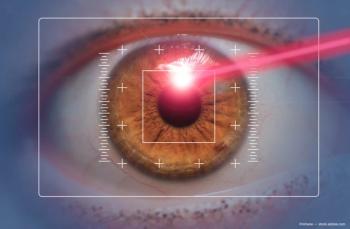
Cryotherapy may result in sympathetic ophthalmia
Cryotherapy applied to treat retinal holes may be associated with the development of sympathetic ophthalmia.
Key Points
A fundus examination through dilated pupils showed a retinal detachment associated with one round hole inferotemporally in the right eye. Cryotherapy with scleral buckle attachment was performed in the right eye. The patient did well in the immediate postoperative period.
Two months postoperatively, she returned with bilateral blurring of the vision. The visual acuities were 20/20 and 20/120 in the right and left eyes, respectively, resulting from macular edema and bilateral granulomatous panuveitis with choroidal thickening, confirmed by ultrasonography.
Three months after the onset of uveitis, the bilateral visual acuities were 20/20, Dr. Chandra reported.
"Sympathetic ophthalmia usually results from penetrating injury to the uveal tissue. In the UK, the estimate is that three out of 10 million penetrating injuries might result in sympathetic ophthalmia, but that incidence is uncertain," he said.
A few reports in the literature have described sympathetic ophthalmia resulting from laser cyclodestructive procedures, Dr. Chandra said, adding, however, that up to this time there have been no reports after the use of cryotherapy to treat a retinal hole.
"The initial pathology in this case beyond the subconjunctival hemorrhage was the incidentally found retinal detachment, which is usually associated with round holes. The incidence of these is poorly defined. The management is very difficult.
"In the United Kingdom, a recent survey reported that from 9% to 94% of retinal surgeons will do surgery depending on the position of the detachment, demarcation lines, the type of hole, and vitreous detachment. Because of the lack of guidelines, it is difficult for retinal surgeons to decide which course to take," he said.
"This patient was, in fact, very fortunate to obtain a very good visual outcome, and it reminds us of what Hippocrates instructed us over a millennium ago: First, do no harm," Dr. Chandra said.
Newsletter
Don’t miss out—get Ophthalmology Times updates on the latest clinical advancements and expert interviews, straight to your inbox.
















































.png)


